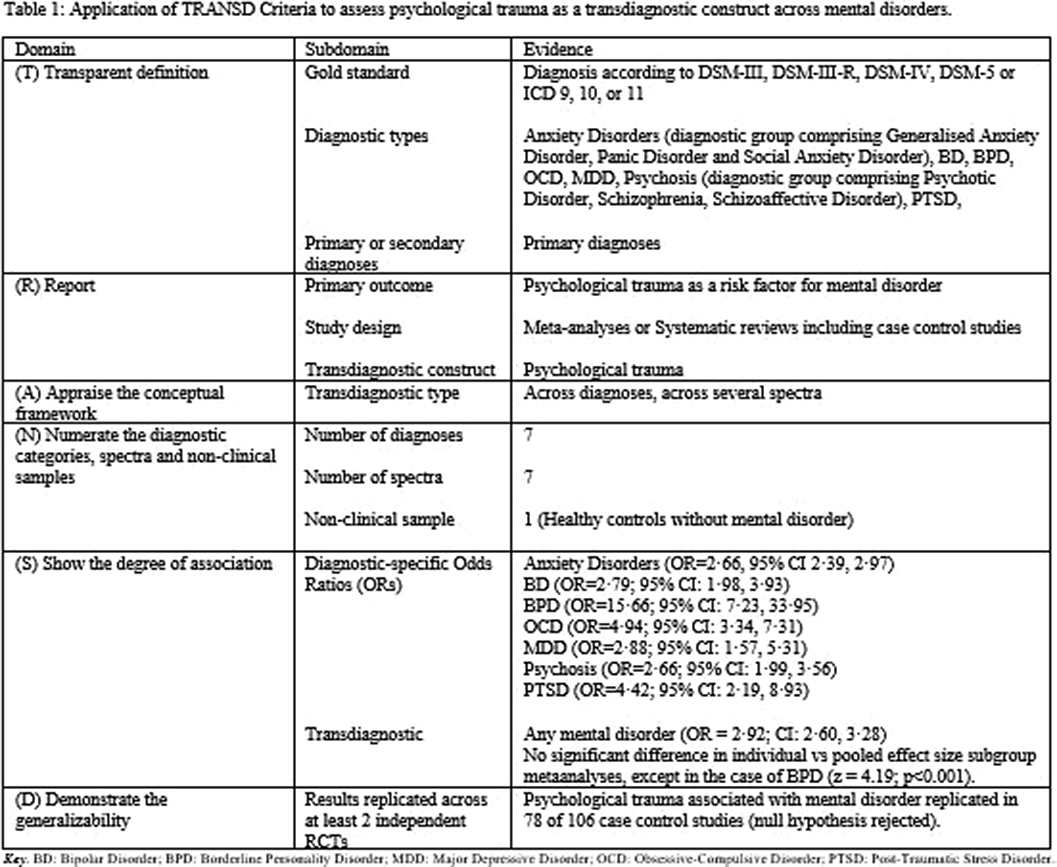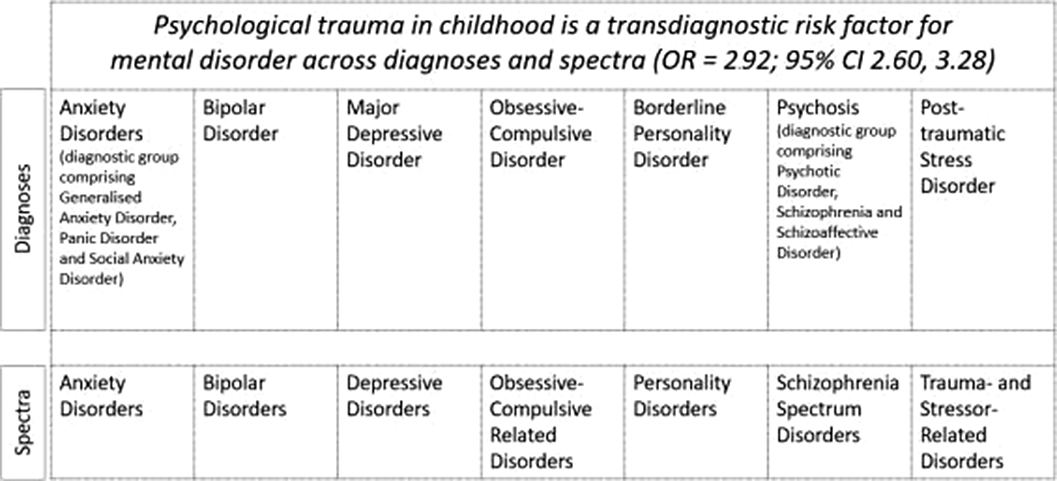111 results
The association of dietary antioxidants and the inflammatory potential of the diet with poor physical function and disability in older Australian men: the Concord Health and Ageing in Men Project
-
- Journal:
- British Journal of Nutrition / Volume 131 / Issue 9 / 14 May 2024
- Published online by Cambridge University Press:
- 15 January 2024, pp. 1528-1539
- Print publication:
- 14 May 2024
-
- Article
-
- You have access
- Open access
- HTML
- Export citation
Water use efficiency and yield responses of Cenchrus purpureus genotypes under irrigation
-
- Journal:
- The Journal of Agricultural Science / Volume 161 / Issue 4 / August 2023
- Published online by Cambridge University Press:
- 07 September 2023, pp. 572-580
-
- Article
- Export citation
INTERNALIZED STIGMA – HOW WE VIEW OUR MENTAL ILLNESS
-
- Journal:
- European Psychiatry / Volume 66 / Issue S1 / March 2023
- Published online by Cambridge University Press:
- 19 July 2023, p. S1032
-
- Article
-
- You have access
- Open access
- Export citation
What’s new on the treatment of pedophilia and hebephilia?
-
- Journal:
- European Psychiatry / Volume 66 / Issue S1 / March 2023
- Published online by Cambridge University Press:
- 19 July 2023, p. S1098
-
- Article
-
- You have access
- Open access
- Export citation
Cerebellar dysfunction and autism spectrum disorders – what do we know?
-
- Journal:
- European Psychiatry / Volume 66 / Issue S1 / March 2023
- Published online by Cambridge University Press:
- 19 July 2023, p. S239
-
- Article
-
- You have access
- Open access
- Export citation
Physical and psychoeducation combined group intervention: a quasi-experimental study with Portuguese cancer survivors
-
- Journal:
- European Psychiatry / Volume 66 / Issue S1 / March 2023
- Published online by Cambridge University Press:
- 19 July 2023, pp. S69-S70
-
- Article
-
- You have access
- Open access
- Export citation
Psychological trauma as a transdiagnostic risk factor for mental disorder: an umbrella meta‐analysis
-
- Journal:
- European Psychiatry / Volume 66 / Issue S1 / March 2023
- Published online by Cambridge University Press:
- 19 July 2023, pp. S982-S983
-
- Article
-
- You have access
- Open access
- Export citation
Hospitalization readmission rates in patients with schizophrenia: A nationwide analysis
-
- Journal:
- European Psychiatry / Volume 66 / Issue S1 / March 2023
- Published online by Cambridge University Press:
- 19 July 2023, p. S128
-
- Article
-
- You have access
- Open access
- Export citation
Evaluation of gamma-aminobutyric acid content in Portuguese cheeses with protected designation of origin status
-
- Journal:
- Journal of Dairy Research / Volume 90 / Issue 1 / February 2023
- Published online by Cambridge University Press:
- 17 February 2023, pp. 88-91
- Print publication:
- February 2023
-
- Article
- Export citation
Checklist of parasites associated with ʻreptiles’ in Northeast Brazil
-
- Journal:
- Journal of Helminthology / Volume 97 / 2023
- Published online by Cambridge University Press:
- 13 January 2023, e3
-
- Article
- Export citation
Endoparasite community structure of an anuran assemblage in the Caatinga, Northeastern Neotropical Region
-
- Journal:
- Journal of Helminthology / Volume 96 / 2022
- Published online by Cambridge University Press:
- 28 October 2022, e78
-
- Article
-
- You have access
- HTML
- Export citation
A review: Circadian Rhythm Dysfunction and Bipolar Disorder
-
- Journal:
- European Psychiatry / Volume 65 / Issue S1 / June 2022
- Published online by Cambridge University Press:
- 01 September 2022, p. S408
-
- Article
-
- You have access
- Open access
- Export citation
Growing use of valproic acid in substance use disorders
-
- Journal:
- European Psychiatry / Volume 65 / Issue S1 / June 2022
- Published online by Cambridge University Press:
- 01 September 2022, pp. S243-S244
-
- Article
-
- You have access
- Open access
- Export citation
Risk of suicide during pregnacy and postpartum period
-
- Journal:
- European Psychiatry / Volume 65 / Issue S1 / June 2022
- Published online by Cambridge University Press:
- 01 September 2022, pp. S854-S855
-
- Article
-
- You have access
- Open access
- Export citation
Early postnatal exposure of rat pups to methylglyoxal induces oxidative stress, inflammation and dysmetabolism at adulthood
-
- Journal:
- Journal of Developmental Origins of Health and Disease / Volume 13 / Issue 5 / October 2022
- Published online by Cambridge University Press:
- 21 January 2022, pp. 617-625
-
- Article
- Export citation
Predictors of the perceived risk of COVID-19 and adherence to confinement guidelines in the context of the COVID-19 pandemic
-
- Journal:
- European Psychiatry / Volume 64 / Issue S1 / April 2021
- Published online by Cambridge University Press:
- 13 August 2021, pp. S676-S677
-
- Article
-
- You have access
- Open access
- Export citation
How are the portuguese coping with the mandatory confinement by COVID-19? Association between mental health and coping strategies
-
- Journal:
- European Psychiatry / Volume 64 / Issue S1 / April 2021
- Published online by Cambridge University Press:
- 13 August 2021, pp. S297-S298
-
- Article
-
- You have access
- Open access
- Export citation
Electroconvulsive therapy use in psychiatric hospitalizations - a nationwide descriptive study
-
- Journal:
- European Psychiatry / Volume 64 / Issue S1 / April 2021
- Published online by Cambridge University Press:
- 13 August 2021, p. S489
-
- Article
-
- You have access
- Open access
- Export citation
Psychiatric disorders during acute hospital treatment of COVID-19 - a case series
-
- Journal:
- European Psychiatry / Volume 64 / Issue S1 / April 2021
- Published online by Cambridge University Press:
- 13 August 2021, p. S654
-
- Article
-
- You have access
- Open access
- Export citation
Gut microbial richness as an earlier biomarker of Mediterranean diet intervention in type 2 diabetes metabolic control
-
- Journal:
- Proceedings of the Nutrition Society / Volume 80 / Issue OCE2 / 2021
- Published online by Cambridge University Press:
- 06 May 2021, E68
-
- Article
-
- You have access
- HTML
- Export citation





